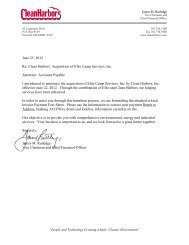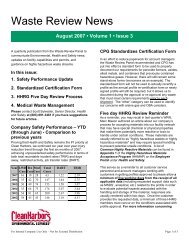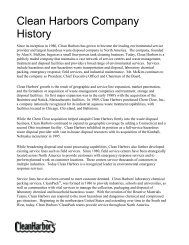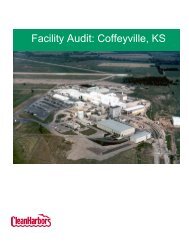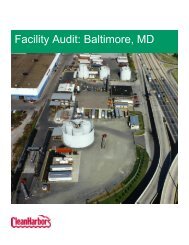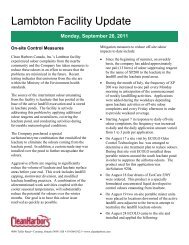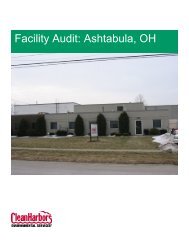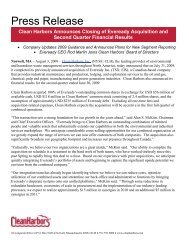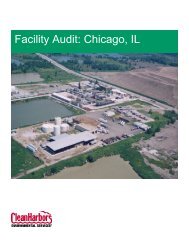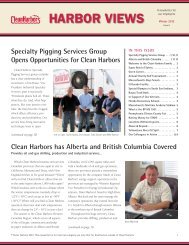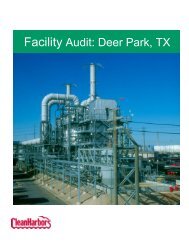Facility Audit: Deer Park, TX - Clean Harbors
Facility Audit: Deer Park, TX - Clean Harbors
Facility Audit: Deer Park, TX - Clean Harbors
You also want an ePaper? Increase the reach of your titles
YUMPU automatically turns print PDFs into web optimized ePapers that Google loves.
Figure 1. STRATIGRAPHIC SECTION OF THE DEER PARK, TEXAS AREA<br />
SYSTEM SERIES FORMATION AQUIFER<br />
Quaternary Holocene Alluvium Chicot Upper<br />
Beaumont<br />
Lower<br />
Pleistocene<br />
Lissie Montgomery Evangeline<br />
Willis<br />
Goliad<br />
Tertiary Pliocene Fleming<br />
Miocene<br />
Burkeville<br />
Jasper<br />
Review of lithologic/textural descriptions from exploratory borings, monitoring well installation<br />
logs, and other such information indicates that the subsurface at the facility consists of sediments<br />
of the regional Beaumont Formation, with the surface soils consisting mainly the Beaumont<br />
Clay. These sediments are generally highly-plastic clays, separated by interbedded, lenticular<br />
deposits of sandy clay, clayey silt, and silty sand. The silt and sand sediments represent periods<br />
of fluvial activity, whereas the clays are mainly of marginal-marine origin.<br />
Based on differences in physical properties, the upper 140 to 150 feet of the subsurface can be<br />
divided into six distinct units. These units are referred to as Strata 1, 2, 3, 4, 5, and 6, in order of<br />
decreasing depth. Figure 2 on the next page provides general unit descriptions of these six strata.<br />
36




